The Order Temnospondyli (excluding the baphetids and colosteids) can be readily defined as a group of monophyletic origin, although it is, surely paraphyletic with respect to the extant amphibians and therefore becomes a series of plesions forming the stem-group of the Lissamphibia. The Temnospondyli is a neglected group. The family-level classification of temnospondyls has remained relatively stable and in the work presented here, we have been able to retain most previously used family units as valid clades with only the occasional need to ‘split’ or ‘lump’. In constructing a hierarchical classification of temnospondyls, we have had to introduce a few new taxonomic units above family level, quite different from those in previous classifications. Because the systematic sections necessarily cover 160 genera and more than 300 species, we have kept the general osteological sections compact in the interest of saving space. Most of the families and genera reviewed here are diagnosed on the basis of cranial characters. We have attempted to include all named genera and species in the synonymies but have not listed erroneous spellings. Where there are clear comparative diagnoses of two or more species within a genus, these diagnoses have been included. We regard the taxonomic sections as the most important parts of this handbook, but nevertheless have put much effort on both morphology and phylogeny, which had long been neglected in major stereospondyl groups. The cladograms we present at the end of each section are provided to make the systematic relationships clearer.
HPH 3B • Stereospondyli
2000. [Englisch] – XII + 220 Seiten, 106 Abbildungen, 16 Tafeln.
25,5 x 20,5 cm, Hardcover.
Reihe: Handbook of Paleoherpetology
120,00 €
zzgl. Versandkosten / Versandkostenfrei in D
Preface V
Acknowledgments VI
Institutional abbreviations VII
Figure abbreviations IX
Suborder Stereospondyli ZITTEL 1887-96 1
Introduction 1
Definition of the Stereospondyli 2
Historical overview 2
Comparative osteology 7
General features 7
Soft-part anatomy 29
Functional morphology 32
Stereospondyl-bearing deposits 35
Palaeoecology 41
Stem-Stereospondyli 42
Morphology of stem-stereospondyls 43
Systematic review 47
Capetus STEEN, 1938 47
Palatinerpeton BOY, 1996 47
Family Lysipterygiidae BRANSON, 1935 47
Archegosauriformes nov. 49
Family Actinodontidae LYDEKKER, 1885 49
Family Intasuchidae KONZHUKOVA, 1953 53
Higher Stem-Stereospondyli 55
Family Archegosauridae LYDEKKER, 1885 56
Subfamily Archegosaurinae LYDEKKER, 1885 56
Subfamily Platyoposaurinae (LYDEKKER, 1885) 57
Family Melosauridae FRITSCH, 1885 60
Subfamily Melosaurinae (FRITSCH, 1885) 60
Subfamily Tryphosuchinae GOLUBEV, 1995 61
Phylogeny of stem-stereospondyls 63
Basal Stereospondyli: Rhinesuchidae, Rhytidostea 66
Morphology of basal stereospondyls 66
Systematic review 70
Family Rhinesuchidae WATSON, 1919 70
Infraorder Rhytidostea nov. 75
Family Lydekkerinidae WATSON, 1919 75
Superfamily Rhytidosteoidea COSGRIFF, 1965 80
Family Rhytidosteidae HUENE, 1920 80
Subfamily Rhytidosteinae (HUENE, 1920) 81
Subfamily Peltosteginae (SÄVE-SÖDERBERGH, 1935) 82
Family Derwentiidae nov. 84
Family Chigutisauridae RUSCONI, 1951 85
Stereospondyli incertae sedis 89
Family Lapillopsidae YATES, 1999 89
Family Sclerothoracidae HUENE, 1932 90
Origin and early evolution of basal stereospondyls 92
Trematosauroidea (SÄVE-SÖDERBERGH, 1935) emend. nov. 95
Morphology of trematosauroids 95
Systematic review 100
Family Wetlugasauridae SÄVE-SÖDERBERGH, 1935 100
Family Benthosuchidae EFREMOV, 1940 103
Family Thoosuchidae (GETMANOV, 1982) 105
Family Trematosauridae WATSON, 1919 108
Subfamily Trematosaurinae WATSON, 1919 108
Subfamily Tertreminae nov. 110
Subfamily Lonchorhynchinae SÄVE-SÖDERBERGH, 1935 111
Family Platystegidae nov. 116
Family Lyrocephaliscidae KUHN, 1961 117
Family Almasauridae DUTUIT, 1972 120
Family Metoposauridae WATSON, 1919 121
Trematosauroidea incertae sedis 127
Phylogeny of trematosauroids 128
Capitosauroidea (SÄVE-SÖDERBERGH, 1935) emend. nov. 131
Morphology of capitosauroids 131
Systematic review 135
Rewanobatrachus nov. gen. 135
Edingerella nov. gen. 135
Odenwaldia nov. gen. 135
Family Parotosuchidae SCHOCH & WERNEBURG, 1998 136
Family Mastodonsauridae LYDEKKER, 1885 140
Family Eryosuchidae nov. 143
Family Paracyclotosauridae OCHEV, 1966 145
Family Cyclotosauridae SHISHKIN, 1964 148
Subfamily Stenotosaurinae KAMPHAUSEN, 1989 149
Subfamily Heylerosaurinae (SHISHKIN, 1980) 150
Subfamily Tatrasuchinae MARYANSKA & SHISHKIN, 1996 151
Subfamily Cyclotosaurinae (SHISHKIN, 1964) 153
Capitosauroidea incertae sedis 157
Indeterminate capitosauroid material 158
Phylogeny of the Capitosauroidea 162
Stratigraphical significance of the Capitosauroidea 164
Stereospondyli incertae sedis 165
Non Stereospondyli 169
Palaeobiogeography of stereospondyls 171
Stratigraphical distribution of stereospondyls 174
References 177
Glossary of anatomical terms 195
Nomenclatural changes 198
Index of genera and higher taxa 199
Plates 202
When this series was initiated by OSKAR KUHN in the mid 1960's, the original concept of Part 3 was the Labyrinthodontia (Ichthyostegalia plus Temnospondyli), in other words the Labyrinthodontia minus the Batrachosauria, which were covered in Parts 5A and 5B. At the time, most early tetrapods tended to be referred to the 'mother-groups' Temnospondyli or Batrachosauria.
Our perception of the systematics and relationships of early amphibian-grade tetrapods has changed since then and the material reviewed in this volume can no longer be treated as one or two coherent groups. The Labyrinthodontia, as originally defined, is now widely agreed to be the primitive grade of tetrapod organisation and not a monophylum. The Order Temnospondyli (excluding the baphetids and colosteids) can be readily defined as a group of monophyletic origin, although it is, in our view, surely paraphyletic with respect to the extant amphibians (MILNER 1988) and therefore becomes a series of plesions forming the stem-group of the Lissamphibia. The remaining early tetrapods (Ichthyostega, Acanthostega, Metaxygnathus, Crassigyrinus, baphetids and colosteids) form a paraphyletic series of small plesions (sensu PATTERSON & ROSEN 1977) on either the tetrapod stem, the amphibian stem, or the amniote stem. They are dealt with in Volume 3A of this series.
The Temnospondyli is a neglected group. The last comprehensive review of temnospondyls and other 'labyrinthodonts' was ROMER's (1947) 'Review of the Labyrinthodontia'. Apart from lists of genera (ROMER 1966) and species (CARROLL & WINER 1977), there has been no attempt to comprehensively review the group in the subsequent forty years. The family-level classification of temnospondyls has remained relatively stable and in the work presented here, we have been able to retain most previously used family units as valid clades with only the occasional need to 'split' or 'lump'. Previously used subordinal and superfamilial units within the Temnospondyli have mostly proved to be either poorly defined, or to be based on primitive characters, or to be redundant elevations of single-family groups. In constructing a hierarchical classification of temnospondyls, we have had to introduce a few new taxonomic units above family level, quite different from those in previous classifications. There is as yet no generally agreed cladistic framework for temnospondyl relationships and the groups and interrelationships proposed here represent the authors conclusions rather than a widely held consensus which simply does not exist.
Because the systematic sections of Volume 3 necessarily cover 160 genera and more than 300 species, we have kept the general osteological sections compact in the interest of saving space. Most of the families and genera reviewed here are diagnosed on the basis of cranial characters. Mandibles have, until recently, been neglected as a source of systematic information while associated postcranial material is only occasionally found. Some postcranial elements are known for most families but the systematic distribution of many postcranial character-states is poorly known and use in a family diagnosis is often based on extrapolation from one or two included genera. Consequently, the diagnoses and cladograms put disproportionate weight on cranial osteological features. Likewise most families are given a size range in terms of skull length rather than whole body length as the latter is rarely known. In general, we refer to forms with skulls less than 10 cm long as 'small' and forms with skulls more than 40 cm long as 'large'.
We have attempted to include all named genera and species in the synonymies but have not listed erroneous spellings (except in situations where the original spelling was incorrect). In genera with more than one valid species, we have placed the genotypic species first, followed by the remaining species in alphabetical order. Where there are clear comparative diagnoses of two or more species within a genus, these diagnoses have been included. In some genera, the included species are ambiguously or inadequately diagnosed, and in these instances we have simply recorded the species as published.
We regard the taxonomic sections as the most important parts of this handbook, but nevertheless have put much effort on both morphology and phylogeny, which had long been neglected in major stereospondyl groups. As systematic relationships today have to be based on shared derived characters, we have distinguished derived from primitive features and indicated this throughout our diagnoses. The cladograms we present at the end of each section are provided to make the systematic relationships clearer, rather than to depict specific phylogenetic problems; therefore we have not listed endless and eventually confusing columns of characters, and also avoided data matrices, which are given and discussed in other papers dealing with explicit phylogenetic analyses.
R. R. SCHOCH, A. R. MILNER
Sie müssen angemeldet sein, um eine Rezension veröffentlichen zu können.
„*“ zeigt erforderliche Felder an
Ähnliche Produkte
-
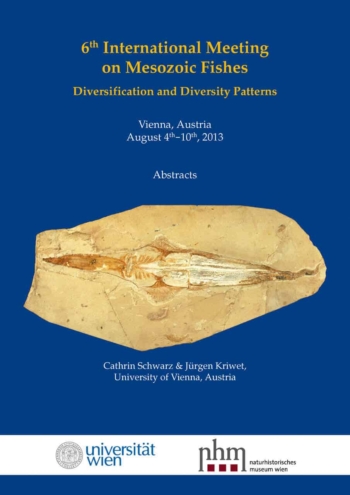
6th International Meeting on Mesozoic Fishes
20,00 €zzgl. Versandkosten / Versandkostenfrei in D
-
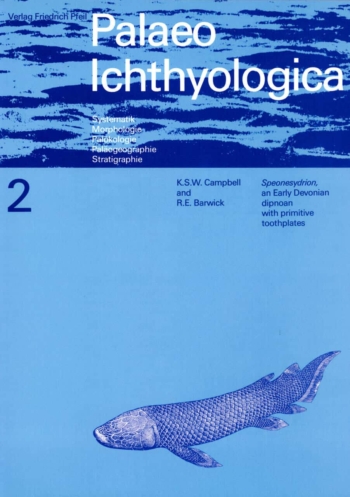
Speonesydrion, an Early Devonian dipnoan with primitive toothplates
20,00 €zzgl. Versandkosten / Versandkostenfrei in D
Wir sind gerne für Sie da
Verlag Dr. Friedrich Pfeil
Hauptstraße 12B
5232 Bergkirchen OT Günding – Germany
Tel.: +49 8131 61 46 590
Fax: +49 8131 61 46 591
E-Mail: info@pfeil-verlag.de
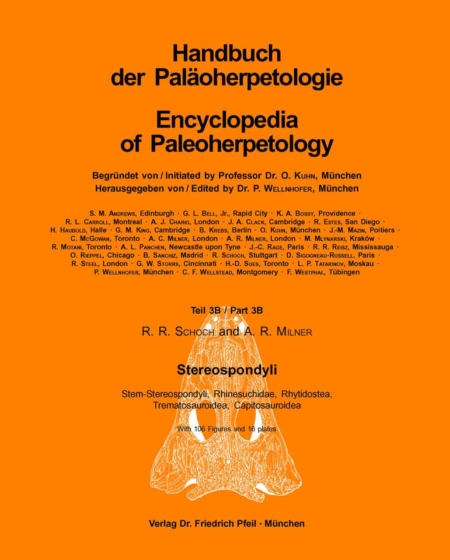
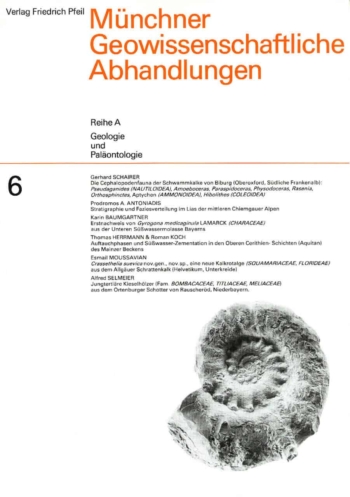
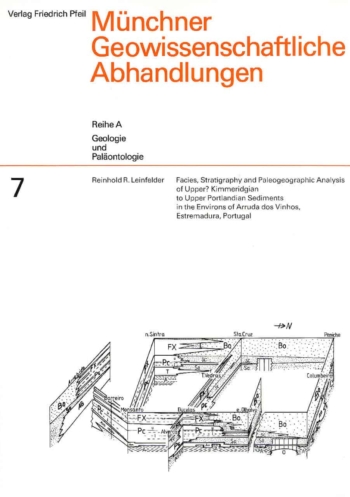
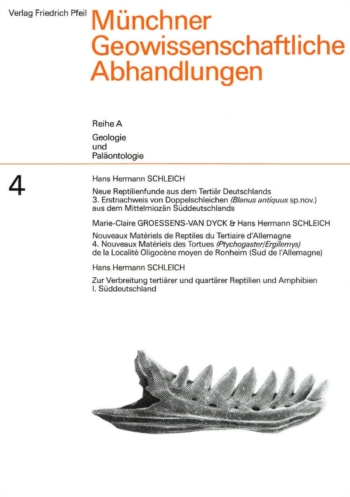
Rezensionen
Es gibt noch keine Rezensionen.